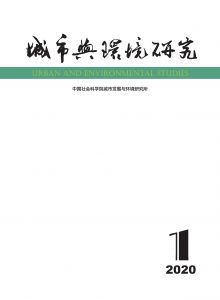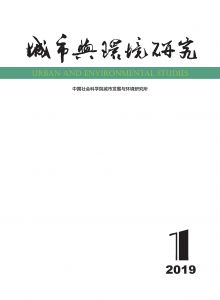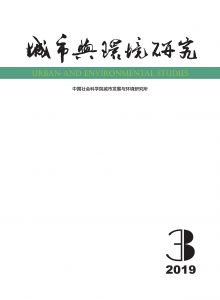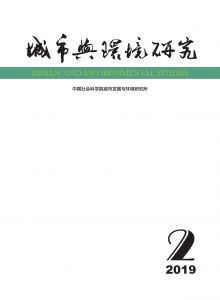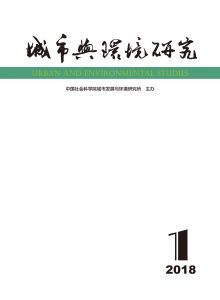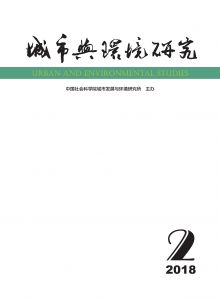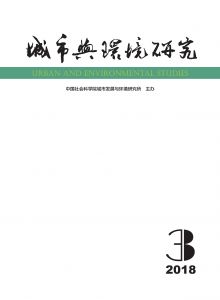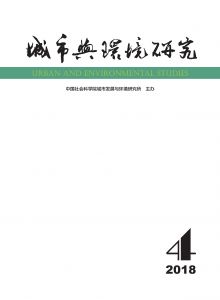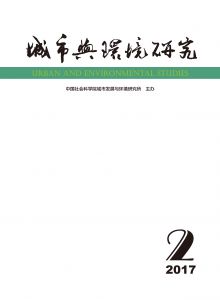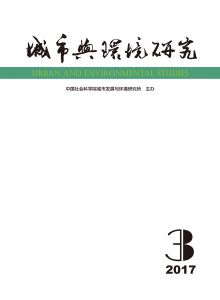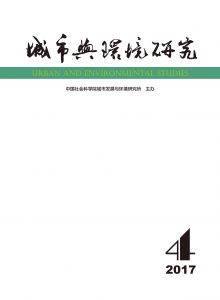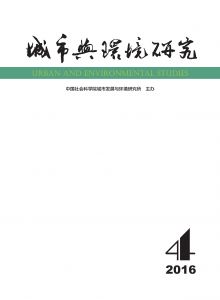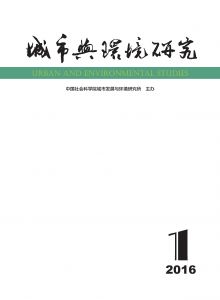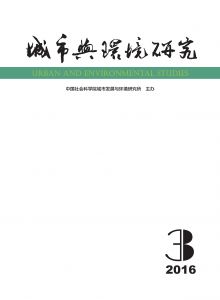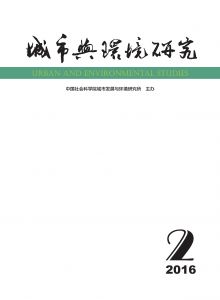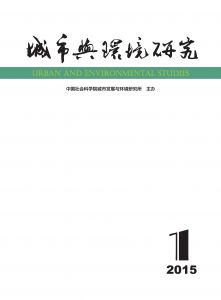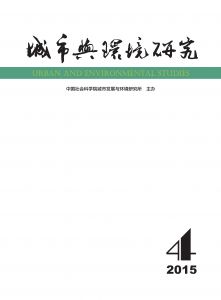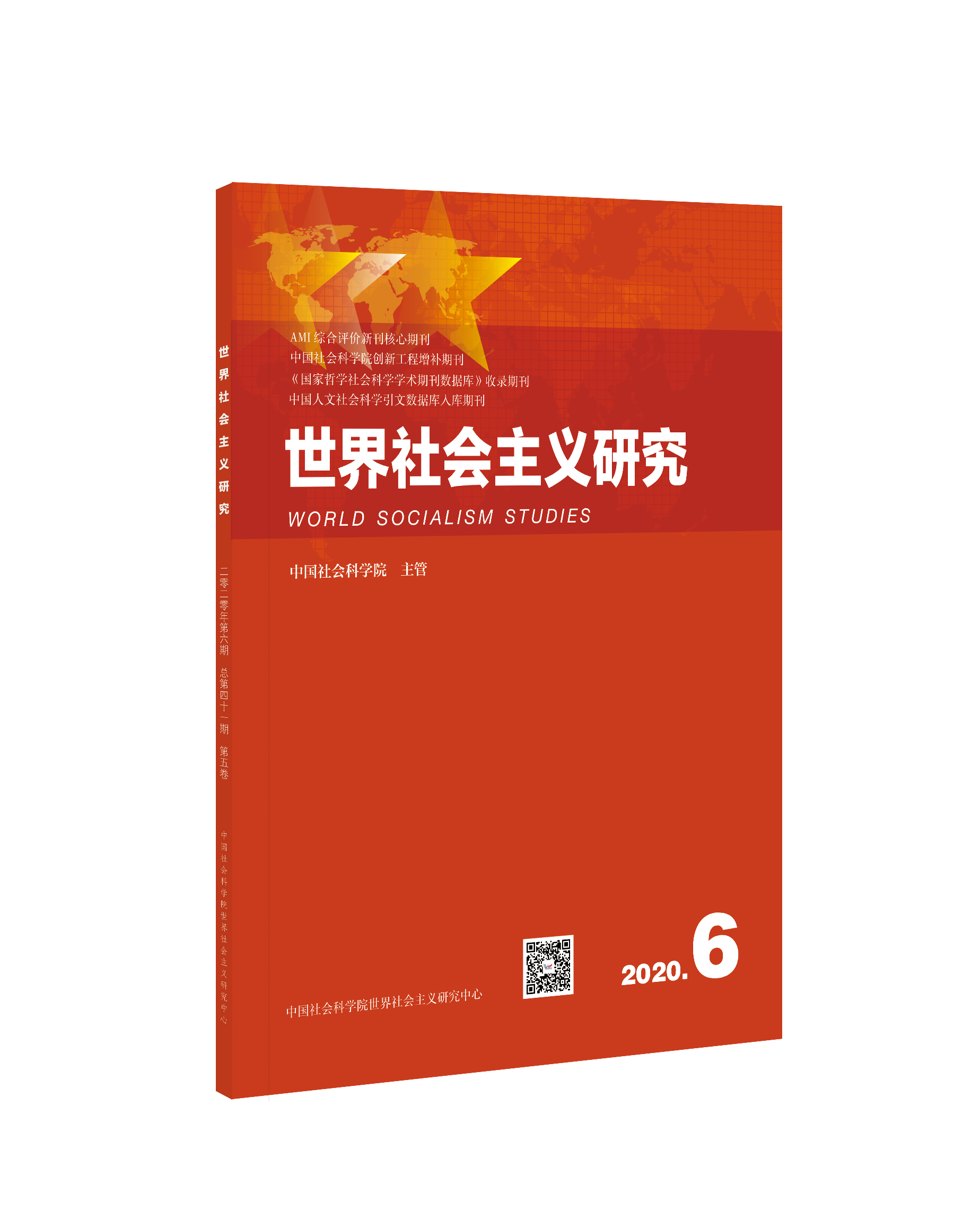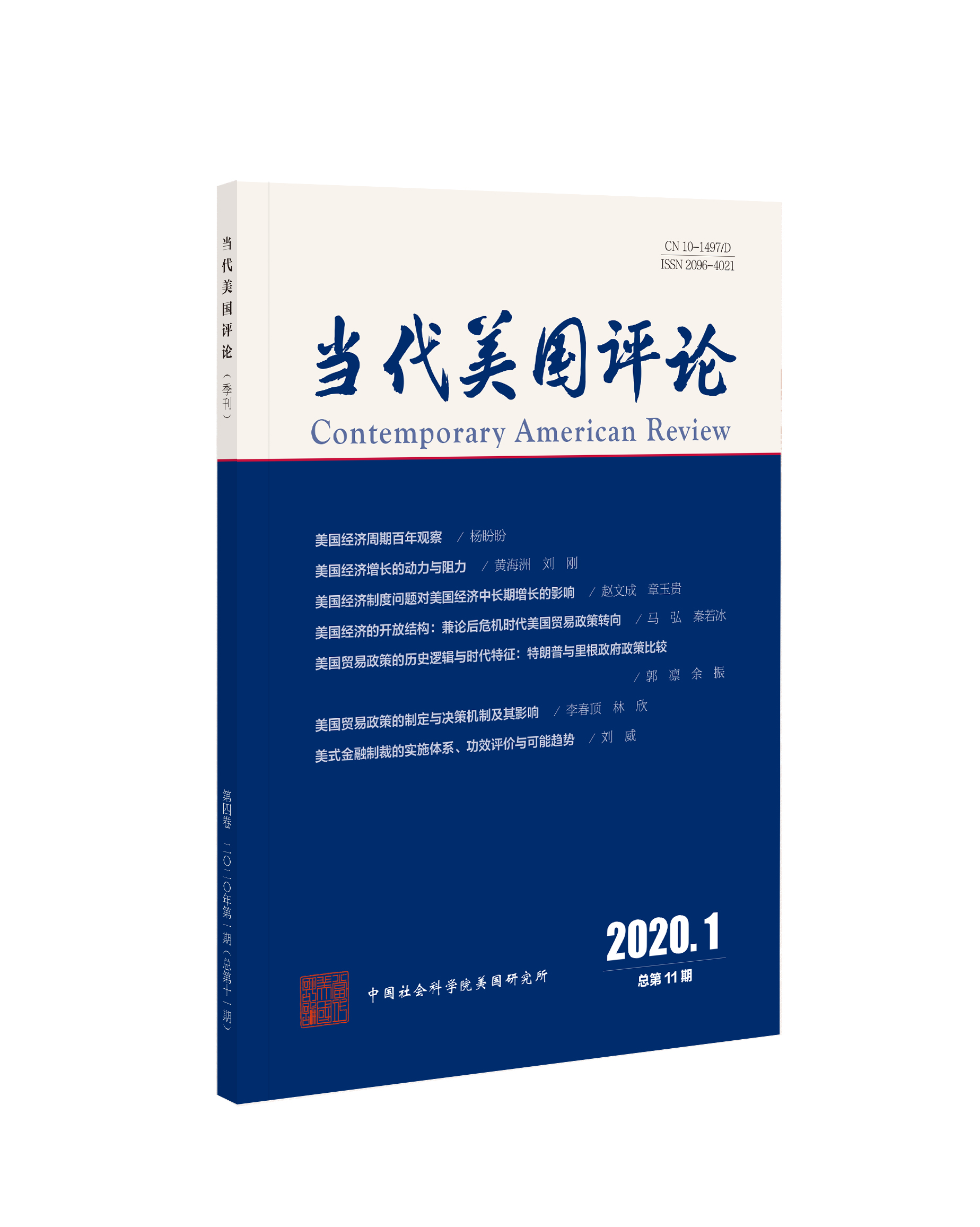最新期刊
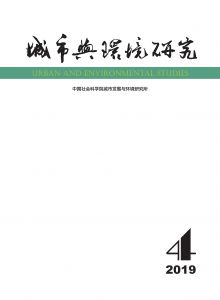
目录
过往期刊
参考文献
-
编委会
-
·学术笔谈·
-
生态文明范式转型——中国与世界
-
-
·名家论坛·
-
循生态规律,提升生态治理能力与水平
-
-
·学术论文·
-
环境规制下城市绿色创新效率演变研究
-
工业集聚有助于污染减排吗?
-
中国征收碳税的福利效应分析
-
中国城市减碳降霾的协同效应分析
-
-
·学术综述·
-
新发展理念指标评价研究综述
-
-
2019年总目录
-
投稿须知
-
版权页
按年份浏览:
- 全部
- 2020
- 2019
- 2018
- 2017
- 2016
- 2015
- 2014
[1][1][美]奥德姆、巴雷特(2009):《生态学基础(第五版)》,陆健健、王伟、王天慧等译,北京:高等教育出版社。
[2][2][美]布莱恩·阿瑟(2018):《复杂经济学:经济思想的新框架》,贾拥民译,杭州:浙江人民出版社。
[3][3][美]戴利、法利(2014):《生态经济学:原理和应用(第二版)》,金志农、陈美球、蔡海生等译,北京:中国人民大学出版社。
[4][4][美]格雷德尔、艾伦比(2004):《产业生态学(第2版)》,施涵译,北京:清华大学出版社。
[5][5]李永平、党承林(2006):《森林顶极群落研究进展》,《云南大学学报(自然科学版)》第S1期,第298~303页。
[6][6]林殆卿、谭芳林、肖华山(2008):《互花米草的生态效果及其治理探讨》,《防护林科技》第3期,第119~123、142页。
[7][7]马世俊、王如松(1984):《社会-经济-自然复合生态系统》,《生态学报》第1期,第1~9页。
[8][8]潘家华(2017):《自然参与分配的价值体系分析》,《中国地质大学学报(社会科学版)》第4期,第1~8页。
[9][9]王如松、欧阳志云(1996):《生态整合——人类可持续发展的科学方法》,《科学通报》第S1期,第47~67页。
[10][10]王如松、赵景柱、赵秦涛(1989):《再生、共生、自生——生态调控三原则与持续发展》,《生态学杂志》第5期,第33~36页。
[11][11]王毅(2019):《中国的环境保护与可持续发展:回顾与展望》,潘家华、高世楫、李庆瑞等编:《美丽中国:新中国70年70人论生态文明建设》,北京:中国环境出版社,第49~62页。
[12][12]习近平(2014):《在中央城镇化工作会议上的讲话》,中共中央文献研究室编:《十八大以来重要文献选编(上)》,北京:中央文献出版社,第589~607页。
[13][13]谢宝华、韩广轩(2018):《外来入侵种互花米草防治研究进展》,《应用生态学报》第10期,第3464~3476页。
[14][14]杨卫东(2018):《浙江湖州桑基鱼塘系统保护与管理措施》,《世界遗产》第Z1期,第59页。
[15][15]周晴(2012):《传统时代南海九江的鱼苗养殖业与桑基鱼塘》,《古今农业》第4期,第69~77页。
[16][16]住房和城乡建设部(2015):《海绵城市建设技术指南——低影响开发雨水系统构建(试行)》,北京:中国建筑工业出版社。
[17][17]Lindeman,R. L.(1942),“The Tropic Dynamic Aspect of Ecology”,Ecology ,23,pp.399-418.
[18][18]曹霞、于娟(2015):《绿色低碳视角下中国区域创新效率研究》,《中国人口·资源与环境》第5期,第10~19页。
[19][19]常晓然、周全、吴晓波(2016):《我国54个城市的创新效率比较研究:基于包含非期望产出的SBM-NDEA模型》,《管理工程学报》第1期,第9~18页。
[20][20]陈凯华、官建成、寇明婷等(2013):《网络DEA模型在科技创新投资效率测度中的应用研究》,《管理评论》第12期,第3~14、68页。
[21][21]陈晓红、易国栋、刘翔(2017):《基于三阶段SBM-DEA模型的中国区域碳排放效率研究》,《运筹与管理》第3期,第115~122页。
[22][22]邓英芝(2015):《中国电力系统环境效率研究:考虑松弛变量的网络DEA视角》,《中国软科学》第11期,第145~154页。
[23][23]冯志军(2013):《中国工业企业绿色创新效率研究》,《中国科技论坛》第2期,第82~88页。
[24][24]韩超、张伟广、冯展斌(2017):《环境规制如何“去”资源错配——基于中国首次约束性污染控制的分析》,《中国工业经济》第4期,第115~134页。
[25][25]康海媛、孙焱林、李先玲(2018):《中国城市科技研发效率的时空演变与影响因素》,《科学学与科学技术管理》第4期,第62~73页。
[26][26]李钢、李颖(2012):《环境规制强度测度理论与实证进展》,《经济管理》第12期,第154~165页。
[27][27]李金滟、李泽宇、李超(2016):《城市绿色创新效率实证研究——来自长江中游城市群的证据》,《江西财经大学学报》第6期,第3~16页。
[28][28]李玲、夏晓华(2018):《污染密集型产业绿色创新效率及影响因素研究》,《中国特色社会主义研究》第1期,第83~88页。
[29][29]李梦琦、胡树华、王利军(2016):《基于DEA模型的长江中游城市群创新效率研究》,《软科学》第4期,第17~21、45页。
[30][30]陆菊春、沈春怡(2019):《国家中心城市绿色创新效率的异质性及演变特征》,《城市问题》第2期,第21~28页。
[31][31]任耀、牛冲槐、牛彤等(2014):《绿色创新效率的理论模型与实证研究》,《管理世界》第7期,第176~177页。
[32][32]王兵、吴延瑞、颜鹏飞(2010):《中国区域环境效率与环境全要素生产率增长》,《经济研究》第5期,第95~109页。
[33][33]王勇、李建民(2015):《环境规制强度衡量的主要方法、潜在问题及其修正》,《财经论丛》第5期,第98~106页。
[34][34]习勇生(2017):《“双一流”建设中地方政府的注意力配置——基于30项省域政策文本的NVivo软件分析》,《教育发展研究》第21期,第31~38页。
[35][35]向小东、林健(2018):《环境规制下中国工业全要素生产率评价研究——基于全局网络DEA-Malmquist指数》,《科技管理研究》第6期,第60~68页。
[36][36]肖仁桥、丁娟、钱丽(2017):《绿色创新绩效评价研究述评》,《贵州财经大学学报》第2期,第100~110页。
[37][37]许慧、李国英(2018):《环境规制对绿色创新效率的影响研究》,《财经问题研究》第9期,第52~58页。
[38][38]杨树旺、吴婷、李梓博(2018):《长江经济带绿色创新效率的时空分异及影响因素研究》,《宏观经济研究》第6期,第107~117、132页。
[39][39]易明、李纲、彭甲超等(2018):《长江经济带绿色全要素生产率的时空分异特征研究》,《管理世界》第11期,第178~179页。
[40][40]尤济红、高志刚(2013):《政府环境规制对能源效率影响的实证研究——以新疆为例》,《资源科学》第6期,第1211~1219页。
[41][41]张娟、耿弘、徐功文等(2019):《环境规制对绿色技术创新的影响研究》,《中国人口·资源与环境》第1期,第168~176页。
[42][42]赵林、张宇硕、焦新颖等(2016):《基于SBM和Malmquist生产率指数的中国海洋经济效率评价研究》,《资源科学》第3期,第461~475页。
[43][43]祝丽云、何枫、张庆芝等(2015):《考虑非期望产出的网络SBMDEA效率评价模型》,《统计与决策》第11期,第56~58页。
[44][44]Baylis,R.,L. Connell and A. Flynn (1998),“Company Size,Environmental Regulation and Ecological Modernization:Further Analysis at the Level of the Firm”,Business Strategy & the Environment ,7(5),pp.285-296.
[45][45]Cooper,W. W.,L. M. Seiford and K. Tone(2007),Data Envelopment Analysis:A Comprehensive Text with Models,Applications,References and DEA-solver Software(2nd ed.) ,New York:Springer.
[46][46]Du,J. L.,Y. Liu and W. X. Diao (2019),“Assessing Regional Differences in Green Innovation Efficiency of Industrial Enterprises in China”,International Journal of Environmental Research and Public Health ,16(6),No.940.
[47][47]Färe,R.,S. Grosskopf and C.A. Pasurka Jr.(2007),“Environmental Production Functions and Environmental Directional Distance Functions”,Energy ,32(7),pp. 1055-1066.
[48][48]Färe,R. and S. Grosskopf (1996),“Productivity and Intermediate Products:A Frontier Approach”,Computational Economics ,50(1),pp.65-70.
[49][49]Jaffe,A. B.(2000),“The U.S. Patent System in Transition:Policy Innovation and the Innovation Process”,Research Policy ,29(4-5),pp. 531-557.
[50][50]Li,H.,J. Zhang and C. Wang,et al. (2018),“An Evaluation of the Impact of Environmental Regulation on the Efficiency of Technology Innovation Using the Combined DEA Model:A Case Study of Xi’an,China”,Sustainable Cities and Society ,DOI:10.1016/j.scs.2018.07.001.
[51][51]Liu,W. B.,W. Meng and X. Li,et al. (2010),“DEA Models with Undesirable Inputs and Outputs”,Annals of Operations Research ,173(1),pp. 177-194.
[52][52]Porter,M. E. and C. van der Linde(1995),“Toward a New Conception of the Environment-Competitiveness Relationship”,The Journal of Economic Perspectives ,9(4),pp. 97-118.
[53][53]Rennings,K.(2000),“Redefining Innovation—Eco-innovation Research and the Contribution from Ecological Economics”,Ecological Economics ,32(2),pp. 319-332.
[54][54]Roper,S.,J. Du and J. H. Love (2008),“Modelling the Innovation Value Chain”,Research Policy ,37(6-7),pp. 961-977.
[55][55]陈建军、胡晨光(2008):《产业集聚的集聚效应——以长江三角洲次区域为例的理论和实证分析》,《管理世界》第6期,第68~83页。
[56][56]李克国(2014):《环境经济学》,北京:中国环境出版社。
[57][57]李伟娜、杨永福、王珍珍(2010):《制造业集聚、大气污染与节能减排》,《经济管理》第9期,第36~44页。
[58][58]李勇刚、张鹏(2013):《产业集聚加剧了中国的环境污染吗——来自中国省级层面的经验证据》,《华中科技大学学报(社会科学版)》第5期,第97~106页。
[59][59]王海宁、陈媛媛(2010):《产业集聚效应与工业能源效率研究——基于中国25个工业行业的实证分析》,《财经研究》第9期,第69~79页。
[60][60]王永进、张国峰(2016):《开发区生产率优势的来源:集聚效应还是选择效应?》,《经济研究》第7期,第58~71页。
[61][61]闫逢柱、苏李、乔娟(2011):《产业集聚发展与环境污染关系的考察——来自中国制造业的证据》,《科学学研究》第1期,第79~83页。
[62][62]杨仁发(2015):《产业集聚能否改善中国环境污染》,《中国人口·资源与环境》第2期,第23~29页。
[63][63]杨仁发、王静(2019):《生产性服务业集聚能否提升中国制造业全球价值链地位?》,《广西财经学院学报》第2期,第1~11页。
[64][64]张可、豆建民(2013):《集聚对环境污染的作用机制研究》,《中国人口科学》第5期,第105~116页。
[65][65]张可、汪东芳(2014):《经济集聚与环境污染的交互影响及空间溢出》,《中国工业经济》第6期,第70~82页。
[66][66]赵菲菲、宋德勇(2018):《环境规制能否推动产业区域转移?——基于中国261个地级市面板数据的实证分析》,《经济问题探索》第8期,第95~102页。
[67][67]Barra,C. and R. Zotti (2018),“Investigating the Non-linearity between National Income and Environmental Pollution:International Evidence of Kuznets Curve”,Environmental Economics and Policy Studies ,20(1),pp.179-210.
[68][68]Cainelli,G.,R.Ganau and D.Iacobucci (2016),“Do Geographic Concentration and Vertically Related Variety Foster Firm Productivity?Micro-Evidence from Italy”,Growth and Change ,47(2),pp.197-217.
[69][69]Cheng,Z. (2016),“The Spatial Correlation and Interaction between Manufacturing Agglomeration and Environmental Pollution”,Ecological Indicators ,61,pp.1024-1032.
[70][70]De Leeuw,A. A. M.,N. Moussiopoulos and P. Sahm,et al. (2001),“Urban Air Quality in Larger Conurbations in the European Union”,Environmental Modeling & Software ,16(4),pp.399-414.
[71][71]Gaigné,C. and J. F. Thisse (2014),New Economic Geography:Past and Future ,Berlin,Springer,pp.539-568.
[72][72]Grossman,G. and A. Krueger (1991),“Environmental Impacts of a North American Free Trade Agreement”,NBER Working Paper ,3914,pp.1-57.
[73][73]Krugman,P. (1991),“Increasing Returns and Economic Geography”,Journal of Political Economy ,99(3),pp.483-499.
[74][74]Otsuka,A. and M. Goto (2017),“Regional Determinants of Energy Intensity in Japan”,Asia-Pacific Journal of Regional Science ,1(1),pp.1-22.
[75][75]Park,H. S. and S. K. Behera (2015),Cities and Sustainability ,New Delhi:Springer,pp.23-48.
[76][76]Verhoef,E. T. and P. Nijkamp (2002),“Externalities in Urban Sustainability:Environmental versus Localization-type Agglomeration Externalities in a General Spatial Equilibrium Model of a Single-sector Monocentric Industrial City”,Ecological Economic s,40(2),pp.157-179.
[77][77]Vernon,R. (1966),“International Investment and International Trade in the Product Cycle”,Quarterly Journal of Economics ,80(2),pp.190-207.
[78][78]陈志鸿(2018):《消费者需求系统模型综述及发展前沿》,《财经智库》第6期,第79~92页。
[79][79]贺菊煌、沈可挺、徐嵩龄(2002):《碳税与二氧化碳减排的CGE模型》,《数量经济技术经济研究》第10期,第39~47页。
[80][80]娄峰(2014):《碳税征收对我国宏观经济及碳减排效应的模拟研究》,《数量经济技术经济研究》第10期,第84~96页。
[81][81]吴施美、郑新业(2016):《消除农村能源贫困需重视系统评估》,《中国能源报》8月29日。
[82][82]许士春、习蓉、何正霞(2012):《中国能源消耗碳排放的影响因素分析及政策启示》,《资源科学》第1期,第2~12页。
[83][83]姚昕、刘希颖(2010):《基于增长视角的中国最优碳税研究》,《经济研究》第11期,第48~59页。
[84][84]张晓娣(2014):《中国开征碳税对价格、福利及公平影响的测度》,《南方经济》第7期,第58~72页。
[85][85]中国财政科学研究院课题组(2018):《在积极推进碳交易的同时择机开征碳税》,《财政研究》第4期,第2~19页。
[86][86]Banks,J.,R. Blundell and A. Lewbel(1997),“Quadratic Engel Curves and Consumer Demand”,The Review of Economics and Statistics ,79(4),pp.527-539.
[87][87]Berry,A.(2019),“The Distributional Effects of a Carbon Tax and Its Impact on Fuel Poverty:A Microsimulation Study in the French Context”,Energy Policy ,124,pp.81-94.
[88][88]Brännlund,R. and J. Nordström(2004),“Carbon Tax Simulations Using a Household Demand Model”,European Economic Review ,48(1),pp.211-233.
[89][89]Bureau,B.(2011),“Distributional Effects of a Carbon Tax on Car Fuels in France”,Energy Economics ,33(1),pp.121-130.
[90][90]Calderon,S.,A.C. Alvarez and A.M.,Loboguerrero,et al.(2016),“Achieving CO2 Reductions in Colombia:Effects of Carbon Taxes and Abatement Targets”,Energy Economics ,56,pp.575-586.
[91][91]Callan,T. S.,S. Lyons and R. Scott,et al.(2009),“The Distributional Implications of a Carbon Tax in Ireland”,Energy Policy ,37(2),pp.407-412.
[92][92]Chen,Z. and P. Nie(2016),“Effects of Carbon Tax on Social Welfare:A Case Study of China”,Applied Energy ,183,pp.1607-1615.
[93][93]Cornwell,A. and J. Creedy(1996),“Carbon Taxation,Prices and Inequality in Australia”,Fiscal Studies ,17(3),pp.21-38.
[94][94]Dogbe,W. and J. M. Gil(2017),“Environmental,Nutritional and Welfare Effects of Introducing a Carbon Tax on Food Products in Spain”,https://ageconsearch.umn.edu/record/258132[2019-10-15].
[95][95]Farzin,Y. H. and O. Tahvonen(1996),“Global Carbon Cycle and the Optimal Time Path of a Carbon Tax”,Oxford Economic Papers New Series ,48 (4),pp.515-536.
[96][96]Floros,N. and A. Vlachou(2005),“Energy Demand and Energy-Related CO2 Emissions in Greek Manufacturing:Assessing the Impact of a Carbon Tax”,Energy Economics ,27 (3),pp.387-413.
[97][97]Friedman,J. and J. Levinsohn(2002),“The Distributional Impacts of Indonesia’s Financial Crisis on Household Welfare:A ‘Rapid Response’ Methodology”,World Bank Economic Review ,16(3),pp.397-423.
[98][98]Gonzalez,F.(2012),“Distributional Effects of Carbon Taxes:The Case of Mexico”,Energy Economics ,34 (6),pp.2102-2115.
[99][99]Hamilton,K. and G. Cameron(1994),“Simulating the Distributional Effects of a Canadian Carbon Tax”,Canadian Public Policy /Analyse de Politiques ,20 (4),pp.385-399.
[100][100]Hoel,M. (1992),“Carbon Taxes:An International Tax or Harmonized Domestic Taxes?”,European Economic Review ,36 (2),pp.400-406.
[101][101]Hoel,M. (1993a),“Harmonization of Carbon Taxes in International Climate Agreements”,Environmental and Resource Economics ,3(3),pp.221-231.
[102][102]Hoel,M. (1993b),“Intertemporal Properties of an International Carbon Tax”,Resource and Energy Economics ,15(1),pp.51-70.
[103][103]Jiang,Z. and S. Shao(2014),“Distributional Effects of a Carbon Tax on Chinese Households:A Case of Shanghai”,Energy Policy ,73(10),pp.269-277.
[104][104]Li,J. and B. Lin(2016),“Inter-factor/Inter-fuel Substitution,Carbon Intensity,and Energy-related CO2 Reduction:Empirical Evidence from China”,Energy Economics ,56,pp.483-494.
[105][105]Liang,Q.M. and Y.M. Wei(2012),“Distributional Impacts of Taxing Carbon in China:Results from the CEEPA Model”,Applied Energy ,92(2),pp.545-551.
[106][106]Liu,L.C.,G. Wu and J.N. Wang,et al.(2011),“China’s Carbon Emissions from Urban and Rural Households During 1992-2007”,Journal of Cleaner Production ,19(15),pp.1754-1762.
[107][107]Mathur,A. and A.C. Morris(2014),“Distributional Effects of a Carbon Tax in Broader U.S. Fiscal Reform”,Energy Policy ,66,pp.326-334.
[108][108]Musgrave,R.A.,and T. Thin(1949),“Income Tax Progression,1929-1948”,Journal of Political Economy ,56(6),pp.498-514.
[109][109]Oladosu,G. and A. Rose (2007),“Income Distribution Impacts of Climate Change Mitigation Policy in the Susquehanna River Basin Economy”,Energy Economics ,29(3),pp.520-544.
[110][110]Pearson,M. and S. Smith(1991),The European Carbon Tax:An Assessment of the European Commission’s Proposals ,London:Institute for Fiscal Studies.
[111][111]Poi,B.P.(2002),Three Essays in Applied Econometrics ,Doctoral Thesis,Department of Economics,University of Michigan.
[112][112]Poi,B.P.(2012),“Easy Demand-System Estimation with QUAIDS”,Stata Journal ,12(3),pp.433-446.
[113][113]Ray,R.(1983),“Measuring the Cost of Child:An Alternative Approach”,Journal of Public Economics ,22 (1),pp.89-102.
[114][114]Tiezzi,S.(2005),“The Welfare Effects and the Distributive Impact of Carbon Taxation on Italian Households”,Energy Policy ,33(12),pp.1597-1612.
[115][115]Timilsina,G.R.(2018),“Carbon Pricing for Climate Change Mitigation”,CAB Reviews ,13(8),pp.1-13.
[116][116]Verde,S.F. and R.S.J. Tol (2009),“The Distributional Impact of a Carbon Tax in Ireland”,Economic and Social Review ,40 (3),pp.317-338.
[117][117]Wei,L. and Z. Jia(2017),“Carbon Tax,Emission Trading,or the Mixed Policy:Which Is the Most Effective Strategy for Climate Change Mitigation in China?”,Mitigation and Adaptation Strategies for Global Change ,22,pp.973-992.
[118][118]Wier,M.,K. Birr-Pedersen and H.K. Jacobsen,et al.(2005),“Are CO2 Taxes Regressive?Evidence from the Danish Experience”,Ecological Economics ,52 (2),pp.239-251.
[119][119]World Bank(2019),State and Trends of Carbon Pricing ,http://documents.shihang.org/curated/zh/191801559846379845/pdf/State-and-Trends-of-Carbon-Pricing-2019.pdf [2019-10-15].
[120][120]Yusuf,A.A. and B.P. Resosudarmo(2015),“On the Distributional Impact of a Carbon Tax in Developing Countries:The Case of Indonesia”,Environmental Economics and Policy Studies ,17(1),pp.131-156.
[121][121]白俊红、聂亮(2017):《环境分权是否真的加剧了雾霾污染?》,《中国人口·资源与环境》第12期,第59~69页。
[122][122]陈强、孙丰凯、徐艳娴(2017):《冬季供暖导致雾霾?来自华北城市面板的证据》,《南开经济研究》第4期,第27~42页。
[123][123]李丽平、姜苹红、李雨青等(2012):《湘潭市“十一五”总量减排措施对温室气体减排协同效应评价研究》,《环境与可持续发展》第1期,第36~40页。
[124][124]李丽平、周国梅、季浩宇(2010):《污染减排的协同效应评价研究:以攀枝花市为例》,《中国人口·资源与环境》第S2期,第91~95。
[125][125]覃小玲(2012):《温室气体与大气污染控制的协同减排效益研究》,华南理工大学硕士学位论文。
[126][126]严雅雪(2017):《碳排放与雾霾污染的协同关系分析》,《环境经济研究》第2期,第52~63页。
[127][127]杨曦、滕飞、王革华(2013):《温室气体减排的协同效益》,《生态经济》第8期,第45~50页。
[128][128]郑佳佳、孙星、张牧吟等(2015):《温室气体减排与大气污染控制的协同效应:国内外研究综述》,《生态经济》第11期,第133~137页。
[129][129]An,Z. S.,R. J. Huang and R.T. Zhang (2019),“Severe Haze in Northern China:A Synergy of Anthropogenic Emissions and Atmospheric Processes”,Proceedings of the National Academy of Sciences of the United States of America ,116(18),pp.8657-8666.
[130][130]Anenberg,S. C.,J. Schwartz and D. Shindell,et al. (2012),“Global Air Quality and Health Co-Benefits of Mitigating Near-Term Climate Change through Methane and Black Carbon Emission Controls”,Environmental Health Perspectives ,120(6),pp.831-839.
[131][131]Bollen,J.,B. Guay and S. Jamet,et al.(2009),Co-benefits of Climate Change MitigationPolicies:Literature Review and New Results ,Paris:OECD Publishing.
[132][132]Cai,W.,K. Li and H. Liao,et al. (2017),“Weather Conditions Conducive to Beijing Severe Haze more Frequent under Climate Change”,Nature Climate Change ,7(4),pp.257-262.
[133][133]Fang,D.,B. Chen and K. Hubacek,et al. (2019),“Clean Air for Some:Unintended Spillover Effects of Regional Air Pollution Policies”,Science Advances ,5(4),eaav4707.
[134][134]IPCC (2001),Climate Change 2001:Mitigation . A Report of Working Group III of the Intergovernmental Panel on Climate Change ,Accra,Ghana.
[135][135]Li,L.,Y. L. Shan and Y. L. Lei,et al. (2019),“Decoupling of Economic Growth and Emissions in China’s Cities:A Case Study of the Central Plains Urban Agglomeration”,Applied Energy ,244(3),pp.36-45.
[136][136]Puppim de Oliveira,J. A.,C. N. H. Doll and T. A. Kurniawan,et al.(2013),“Promoting Win-win Situations in Climate Change Mitigation,Local Environmental Quality and Development in Asian Cities through Co-benefits”,Journal of Cleaner Production ,58,pp.1-6.
[137][137]Rafaj,P.,W. Schöpp and P. Russ,et al. (2013),“Co-benefits of Post-2012 Global Climate Mitigation Policies”,Mitigation and Adaptation Strategies for Global Change ,18(6),pp.801-824.
[138][138]Shih,Y. H. and C. H. Tseng (2014),“Cost-benefit Analysis of Sustainable Energy Development Using Life-cycle Co-benefits Assessment and the System Dynamics Approach”,Applied Energy ,119,pp.57-66.
[139][139]Wang,H. J.,H. P. Chen and J. P. Liu (2015),“Arctic Sea Ice Decline Intensified Haze Pollution in Eastern China”,Atmospheric and Oceanic Science Letters ,8(1),pp.1-9.
[140][140]Xie,X.,Y. W. Weng and W. J. Cai (2018),“Co-Benefits of CO2 Mitigation for NOX Emission Reduction:A Research Based on the DICE Model”,Sustainability ,10(4),p.1109.
[141][141]Xu,S.,W. Zhang and Q. Li,et al.(2017),“Decomposition Analysis of the Factors that Influence Energy Related Air Pollutant Emission Changes in China Using the SDA Method”,Sustainability ,9(10),p.1742.
[142][142]Zou,Y.,Y. Wang and Y. Zhang,et al. (2017),“Arctic Sea Ice,Eurasia Snow,and Extreme Winter Haze in China”,Science Advances ,3(3),e1602751.
[143][143]北京师范大学、西南财经大学、国家统计局(2016):《2016中国绿色发展指数报告》,北京:北京师范大学出版社。
[144][144]曹炳汝(2015):《中国城乡发展协调度测度》,《城市问题》第11期,第18~22、37页。
[145][145]陈威、潘润秋、王心怡(2016):《中国省域对外开放度时空格局演化与驱动机制》,《地理与地理信息科学》第3期,第53~60页。
[146][146]褚福灵(2016):《共享发展的内涵及衡量标准研究》,《中国社会保障》第6期,第30~32页。
[147][147]顾海良(2017):《新发展理念的新时代政治经济学意义》,《经济研究》第11期,第15~17页。
[148][148]郭永杰、米文宝、赵莹(2015):《宁夏县域绿色发展水平空间分异及影响因素》,《经济地理》第3期,第8、45~51页。
[149][149]韩言虎、杨艳、郑成华(2018):《丝绸之路经济带城市国际化水平测度模型与实证研究》,《管理世界》第8期,第180~181页。
[150][150]杭州市科技局(2008):《杭州创新指数介绍》,《杭州科技》第4期,第9~11页。
[151][151]洪开荣、浣晓旭、孙倩(2013):《中部地区资源—环境—经济—社会协调发展的定量评价与比较分析》,《经济地理》第12期,第16~23页。
[152][152]胡智、刘志雄(2005):《中国经济开放度的测算与国际比较》,《世界经济研究》第7期,第10~17、25页。
[153][153]吉亚辉、罗朋伟(2018):《产业协调与区域经济协调的耦合研究——基于中国四大板块制造业的实证分析》,《开发研究》第5期,第15~21页。
[154][154]金碚(2017):《论经济发展的本真复兴》,《城市与环境研究》第3期,第3~15页。
[155][155]金碚(2018):《在新发展理念引领下建设现代化经济体系》,《经济理论与经济管理》第1期,第13~15页。
[156][156]李翀(1998):《我国对外开放程度的度量与比较》,《经济研究》第1期,第28~31页。
[157][157]李国平、李宏伟(2018):《绿色发展视角下国家重点生态功能区绿色减贫效果评价》,《软科学》第12期,第93~98页。
[158][158]李晖、李詹(2017):《省际共享发展评价体系研究》,《求索》第12期,第87~95页。
[159][159]李明超(2017):《基于区域竞争力的城市国际化评估与提升路径》,《企业经济》第10期,第127~133页。
[160][160]李青、黄亮雄(2014):《中国省际开放度的经济指标体系与政策走向》,《改革》第12期,第118~126页。
[161][161]刘建国(2016):《北京市区域协调发展的综合测度》,《区域经济评论》第1期,第66~71页。
[162][162]刘明广(2016):《城市创新指数设计与实证研究——以广东省广州市为例》,《商业经济研究》第6期,第21~24页。
[163][163]刘伟(2017):《坚持新发展理念,推动现代化经济体系建设——学习习近平新时代中国特色社会主义思想关于新发展理念的体会》,《管理世界》第12期,第1~7页。
[164][164]马健永(2017):《论五大发展理念的科学内涵及其逻辑关系》,《经济与社会发展》第4期,第27~31页。
[165][165]潘家华(2018):《从生态失衡迈向生态文明:改革开放40年中国绿色转型发展的进程与展望》,《城市与环境研究》第4期,第3~16页。
[166][166]首都科技发展战略研究院(2012):《首都科技创新发展报告2012》,北京:科学出版社。
[167][167]孙丽冬、陈耀辉(2008):《经济对外开放度指数的测算模型》,《统计与决策》第14期,第35~36页。
[168][168]孙轩(2016):《城市群产业协调发展的多指数评价与分析》,《城市与环境研究》第3期,第99~110页。
[169][169]覃成林(2011):《区域协调发展机制体系研究》,《经济学家》第4期,第63~70页。
[170][170]唐志鹏、刘卫东、刘红光(2010):《投入产出分析框架下的产业结构协调发展测度》,《中国软科学》第3期,第103~110页。
[171][171]王海军、成佳(2016):《沈阳城市创新指数研究》,《辽宁经济》第12期,第62~63页。
[172][172]王志玲、蓝洁、周文鹏等(2018):《青岛科技创新指数研究》,《科技和产业》第6期,第79~83页。
[173][173]习近平(2019):《深入理解新发展理念》,《求是》第10期,第4~16页。
[174][174]谢婷婷、郭艳芳(2016):《“一带一路”视域下我国省域经济开放度提升的实证研究——基于空间面板模型的分析》,《华东经济管理》第4期,第49~55页。
[175][175]杨新洪(2017):《“五大发展理念”统计评价指标体系构建——以深圳市为例》,《调研世界》第7期,第3~7页。
[176][176]袁志红(2012):《城市创新指数的设计与选择研究——以太原为例》,《科技管理研究》第15期,第79~83页。
[177][177]张可云、项目(2011):《中国省会城市国际化水平比较研究》,《地域研究与开发》第4期,第51~53、60页。
[178][178]张立生(2016):《基于市级尺度的中国城乡协调发展空间演化》,《地理科学》第8期,第1165~1171页。
[179][179]张涛、姚慧芹(2019):《新发展理念助推中国经济向高质量发展转型》,《河北学刊》第3期,第123~127页。
[180][180]张亚斌、赵景峰(2017):《中国经济社会发展质量及对全面建成小康社会的影响——基于五大发展新理念的理论与实证》,《财贸研究》第3期,第1~10页。
[181][181]赵培红、卜凡月、李立国(2018):《京津冀共享发展水平研究》,《区域经济评论》第2期,第34~44页。
[182][182]赵彦云、甄峰、吴翌琳等(2009):《金融危机下的中国区域创新能力——中国31个省区市创新能力指数2008年实证和2009年展望》,《经济理论与经济管理》第8期,第60~65页。
[183][183]赵彦云、吴翌琳(2010):《中国区域创新模式及发展新方向——基于中国31个省区市2001—2009年创新指数的分析》,《经济理论与经济管理》第12期,第69~77页。
[184][184]赵翊(2019):《基于产业指数分析的宁夏经济部门协调发展研究》,《开发研究》第3期,第148~152页。
[185][185]中共中央党校(国家行政学院)经济学教研部课题组(2019):《中国经济发展方式转变综合评价指数研究》,《行政管理改革》第1期,第35~43页。
[186][186]Carson,R. (1962),Silent Spring ,Boston:Houghton Mifflin Company.
[187][187]Dutta,S.,B. Lanvin and S. Wunsch-Vincent (2019),Global Innovation Index 2019,https://www.wipo.int/edocs/pubdocs/en/wipo_pub_gii_2019.pdf[2019-10-19].
[188][188]Gygli,S.,F. Haelg and N. Potrafke,et al. (2019),“The KOF Globalisation Index-Revisited”,The Review of International Organizations ,14(3),pp.543-574.
[189][189]Krugman,P. (1991),“Increasing Returns and Economic Geography”,Journal of Political Economy ,99(3),pp.483-499.
[190][190]Krugman,P. (1998),“What’s New about the New Economic Geography?”,Oxford Review of Economic Policy ,14(2),pp.7-17.
[191][191]Meadows,D. (1972),Limits to Growth ,New York:Penguin.
[192][192]Porter,M.,J. Sachs and J. McArthur (2002),“Executive Summary:Competitiveness and Stages of Economic Development”,in M. Porter,et al.(eds.),The Global Competitiveness Report 2001-2002 ,New York:Oxford University Press,pp.16-26.
[193][193]Rees,W. E. (1992),“Ecological Footprints and Appropriated Carrying Capacity:What Urban Economics Leaves Out”,Environment and Urbanization ,4(2),pp.121-130.
[194][194]Wackernagel,M. (1994),“Ecological Footprint and Appropriated Carrying Capacity:A Tool for Planning toward Sustainability”,Vancouver:Doctoral Dissertation of University of British Columbia.
[195][195]World Economic Forum (2018),The Inclusive Development Index 2018,http://www3.weforum.org/docs/WEF_Forum_IncGrwth_2018.pdf[2019-10-19].
[展开]
相关推荐
手机可扫码阅读


